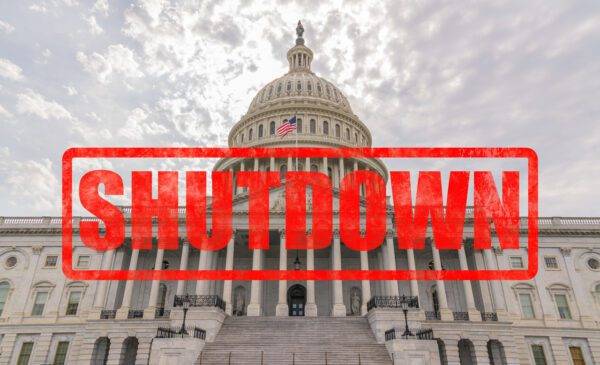Marcus Hill, 39, is an Oakland resident and professional who travels often for work. During his last trip, he brought along his wife and daughter for the weekend, only to be met with the widespread disruptions created by shutdown-related staffing shortages.
“Man, that day at Oakland Airport was rough. We got there early because we knew flights were already backed up from the shutdown. But the whole terminal felt tense — long lines, people arguing with gate agents, kids crying, phones dying,” Hill explained.
“We waited almost four hours while our flight kept getting pushed back. First it was ‘delayed due to staffing,’ then they said they didn’t have enough air traffic controllers cleared to handle the route,” he continued. “By the time they officially canceled it, folks were furious. Including me.”
Hill’s experience is similar to that of many travelers across California and nationwide as the aviation system struggles to recover from the shutdown’s staffing shortages and operational disruptions.
Most major airports in California have been impacted.
Although President Donald Trump signed a deal Nov. 12 ending the longest government shutdown in U.S. history (43 days), officials say travelers should still expect flight delays nationwide for the next week or possibly more.
On Nov. 7, the Federal Aviation Administration (FAA) issued an emergency order to 40 airports to reduce flights by 6% because of the shortage of air traffic controllers caused by the shutdown.
Four of the 40 airports impacted by the order are in California (Los Angeles International (LAX), Oakland International (OAK), San Diego International (SAN), and San Francisco International (SFO)).
Hundreds of domestic flights were canceled during the shutdown, throwing travelers into a scheduling panic. Had the shutdown continued, officials warned that cancellations could have expanded to affect up to 10% of all flights nationwide.
Transportation Secretary Sean Duffy last week tried to assure travelers that the staffing issues are improving and a return to normal flight schedules is not too far ahead. A Nov. 12 FAA press release states that air traffic controllers will receive 70% of their pay within 24 to 48 hours of the shutdown ending.
“The FAA safety team is encouraged to see our air traffic control staffing surge, and they feel comfortable with pausing the reduction schedule to give us time to review the airspace,” said Duffy. “The data is going to guide what we do because the safety of the American people comes first. If the FAA safety team determines the trend lines are moving in the right direction, we’ll put forward a path to resume normal operations.”
Representatives of the airline industry estimate that flights could return to normal within a week of the shutdown ending. However, there are key workarounds recommended to ensure your travel is as seamless as possible during what is estimated to be a heavy travel season in the coming months.
“I’m nervous about Thanksgiving,” said Hill. “We’re planning to fly from Oakland down to San Diego to see my wife’s family. Normally that’s an easy trip — an hour and some change in the air. But now I’m thinking about whether we’re walking right back into the same mess: delays, cancellations, overcrowded flights, or last-minute staffing issues. Even if the shutdown is over, the system doesn’t just bounce back overnight.”
Travel experts recommend booking early and prioritizing nonstop, morning flights to minimize disruptions during the FAA-mandated flight cuts. Nonstop routes reduce the chance of delays from missed connections, and early departures leave before staffing or aircraft shortages build up. Travelers in California may also want to consider secondary airports, when possible, since major hubs like LAX and SFO are expected to experience the heaviest schedule reductions.
Flexibility is also important this holiday season. Choosing tickets that allow free changes or refunds gives travelers room to adapt if flights are canceled or rescheduled. Some experts even suggest purchasing a refundable backup ticket on a different airline for important trips. Enabling real-time alerts through airline apps and flight-tracking services can also help travelers respond quickly when disruptions occur, increasing the odds of securing a timely rebooking.
While some are celebrating the end of the shutdown, California lawmakers have also voiced frustration with the broader fallout of the Trump administration policies Democrats were pushing back against before ending their holdout. U.S. Rep. Sydney Kamlager-Dove (D-Los Angeles) said the end of the impasse still leaves families dealing with expensive, cascading consequences across daily life — including travel.
“While this is not the outcome we wanted, make no mistake: the fight is far from over. Americans now see more clearly than ever that every aspect of their life is more expensive under the Trump Administration,” she said in a recent statement.
For flights to resume as usual, the Transportation Department must ensure enough air traffic controllers are back to work to minimize staffing-related flight delays.
On Nov. 14, the FAA rolled back the required flight reduction to 3 % at the 40 airports, but the order remains in effect and has not yet been fully rescinded.
Transportation Secretary Sean P. Duffy and the FAA say the order will only be lifted once staffing and safety metrics are sufficiently stable.
As of press time, officials had not provided a timeline for when normal operations would fully resume.


